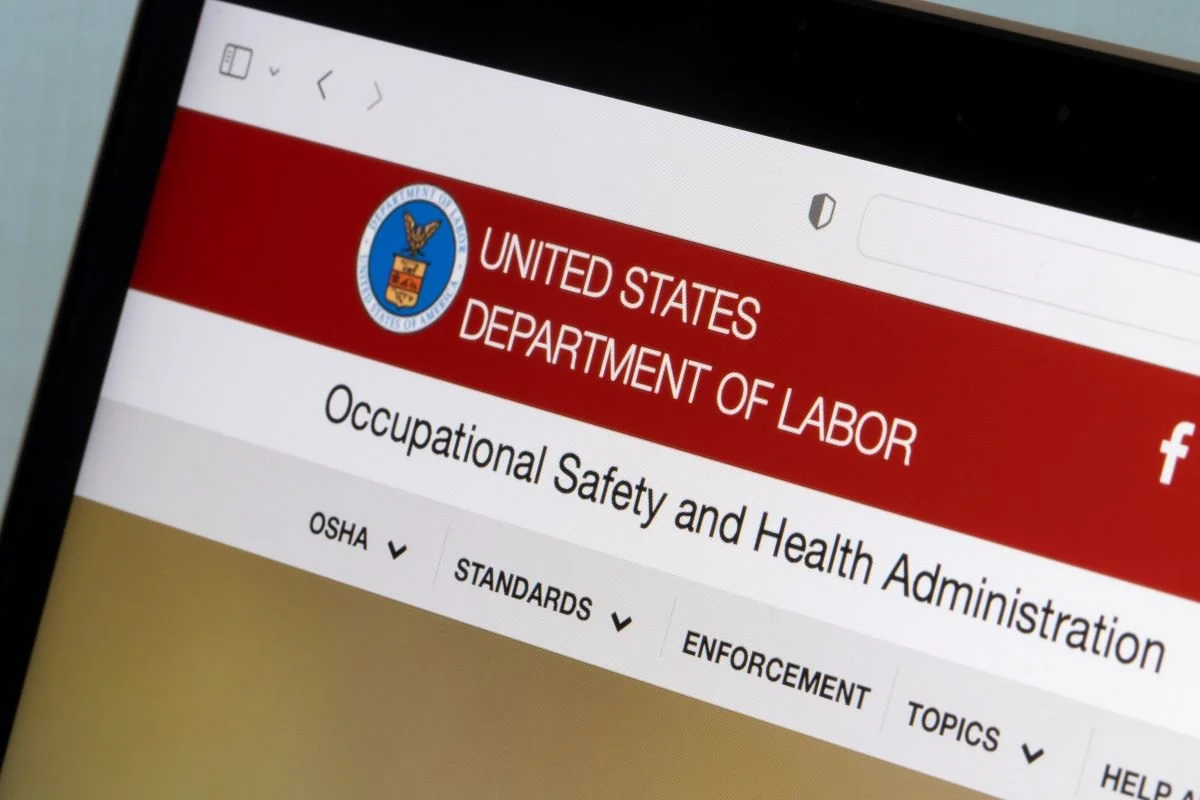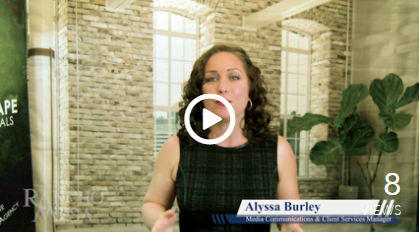
Industry News

Random Acts of Violence: Are They OSHA Recordable?
Author, Megan Lockhart, Client Communications Coordinator, Rancho Mesa Insurance Services, Inc.
Are random acts of violence OSHA recordable? This is a question many companies, particularly those that are required to report to OSHA annually, may ask. Whether the incident involves construction workers building in a high-crime area, or employees encountering hostile customers, determining if violent injuries are work-related is not always a black and white decision.
Author, Megan Lockhart, Client Communications Coordinator, Rancho Mesa Insurance Services, Inc.
Are random acts of violence OSHA recordable? This is a question many companies, particularly those that are required to report to OSHA annually, may ask. Whether the incident involves construction workers building in a high-crime area, or employees encountering hostile customers, determining if violent injuries are work-related is not always a black and white decision.
A letter submitted to OSHA this year requested interpretation for a scenario that fell into this recordkeeping gray-area. An employee was driving a company vehicle on a public road on his way to a client. When he approached an accident on the road, the individual who caused the accident shot the employee and stole the vehicle. OSHA determined that the employee’s injuries were work-related and was thus recordable because he was acting in the interest of the employer.
This scenario is pivotal to further defining a work-related incident. However, OSHA also acknowledged some cases that would be exceptions to these standards.
“Some cases involving violent acts might be included within one of the exceptions listed in section 1904.5(b)(2),” the OSHA board wrote. “For example, if an employee arrives at work early to use a company conference room for a civic club meeting and is injured by some violent act, the case would not be work-related…”
Incidents in workplaces such as construction sites that are among the public could also be OSHA recordable. In the past, clients have expressed concerns for the safety of their workers dealing with hostile individuals possibly entering the jobsite and putting their employees at risk.
It's best to assume a violent incident involving an employee is recordable, rather than omitting it from reporting and risk financial penalties.
Rancho Mesa offers several newly-added online training courses in the SafetyOne™ platform related to handling and preventing workplace violence. For any questions regarding accessing these trainings for your employees, contact your client technology coordinator.
Digitalization in the Construction Industry: A How-To Guide
Author, Megan Lockhart, Client Communications Coordinator, Rancho Mesa Insurance Services, Inc.
The construction industry stands as one of the biggest contributors to the U.S. economy. With the rapid advancements in technology, however, it still stands out as one of the least digitized industries in the world. While traditionally, construction companies have been loyal to paper methods, digitalization in construction brings many benefits such as increased efficiency, improved safety, and enhanced communication.
Author, Megan Lockhart, Client Communications Coordinator, Rancho Mesa Insurance Services, Inc.
The construction industry stands as one of the biggest contributors to the U.S. economy. With the rapid advancements in technology, however, it still stands out as one of the least digitized industries in the world. While traditionally, construction companies have been loyal to paper methods, digitalization in construction brings many benefits such as increased efficiency, improved safety, and enhanced communication.
Although it might seem intimidating, making the jump from paper to pixels can help propel your company to the next level, especially in safety. Rancho Mesa offers the SafetyOne™ app to help transition companies into the digital age. Taking the first steps in this process with intention will make a huge impact in the long run, and we've outlined some key factors to get you started.
Collect the Paper
Once you have decided to ditch the paper and move to a digital format, one of the first steps is to get those papers organized. Collect all the forms, spreadsheets, and checklists you manually fill out. These include equipment inspections, training documentation, toolbox talk sign-in sheets, etc. Once you’ve gathered everything you use on a regular basis, you will be able to easily see what can be digitized.
Set Priorities and Goals
Making the switch to digital can appear intimidating especially when the goals exceed the realistic time frame. Prioritize what should be digitalized first and delegate who is responsible for completing each task. If you are using SafetyOne, the priority might be to add the names of your projects to the system and decide who will need access to the admin website and mobile app.
Start with the Easy
When you begin digitalizing your safety program, start with small switches that are easy for your employees to adopt. We recommend SafetyOne’s toolbox talks as a starting point because it only requires a few simple steps to implement.
The SafetyOne platform has a library of toolbox talks that can be accessed on the jobsite via the mobile app with ease. Once the supervisor has conducted the toolbox talk, each employee can document their attendance by signing their name on the supervisor’s mobile device. The employee doesn’t need to be added as a user nor have the app on their personal device. The documentation will automatically be filed in the system and can be reviewed back at the office.
Create Digital Versions of Paper Forms
Once you have collected the information and forms your company uses, you can begin the process of creating digital versions of them. Start with the most important forms and go from there. In SafetyOne, you can create your own forms or choose from a library of mobile forms and observations that can be filled out on the jobsite via a mobile phone or tablet.
Digitalizing your forms has several benefits. While similar to the process you have already been doing, it increases efficiency and saves time. You will no longer need to worry about misplacing the document, or bringing the physical form back to the office and filing it manually. Once a mobile form is submitted on the SafetyOne app, it will automatically be filed in the platform. Plus, digital forms can be easily accessed, edited, and shared, improving collaboration.
As technology continues to evolve, it is important for construction employers to utilize digital tools in order to stay competitive in the industry. With the potential to save time and minimize risks, and improve employee safety, the construction industry is gradually embracing digitalization. Rancho Mesa is here to offer the tools and guidance to make this transition successful.
For more information about how SafetyOne can help your company, contact your client technology coordinator or visit the SafetyOne page on ranchomesa.com.
Is Your Organization at Risk? Assessing the Need for an AI Policy
Author, Megan Lockhart, Client Communications Coordinator, Rancho Mesa Insurance Services, Inc.
Since the release of ChatGPT this year, it seems every technology platform is incorporating Artificial Intelligence (AI) into their products. However, concerns are quickly rising about the effects AI technology may have on industries. As more companies begin to incorporate AI into their products and operations, now is the time to reevaluate the necessity of an AI policy for your organization.
Author, Megan Lockhart, Client Communications Coordinator, Rancho Mesa Insurance Services, Inc.
Since the release of ChatGPT in November 2022, it seems every technology platform is incorporating Artificial Intelligence (AI) into their products. However, concerns are quickly rising about the effects AI technology will have on every industry. As more companies begin to incorporate AI into their products and operations, now is the time to evaluate the necessity of an AI policy for your organization.
Although AI offers many benefits to businesses such as enhancing productivity, assisting in brainstorming and creativity, it can also pose new risks. Human services organizations like healthcare facilities and nonprofits may be particularly vulnerable to these risks.
“It’s important not to blindly jump into AI technology without a proper plan in place,” Nick Leighton, business owner, best-selling author and motivational speaker, writes in Forbes Magazine. “You could be setting yourself up for costly mistakes and risks. Creating an AI policy doesn’t have to be overly complex. It’s best to start with simple guidelines that you can expand and adapt as your usage of the technology expands.”
One cause for concern when using AI platforms such as ChatGPT is that responses will not always generate accurate information. It is possible the sources used are incomplete, biased or flat-out errors. To avoid employees distributing false information to clients, content should always be proofread by a human being.
"Non-profit and human service organizations depend on the public's trust,” said Sam Brown, Vice President of the Human Services Group with Rancho Mesa Insurance. “Whether a development director uses AI to learn from donor data and personalize their experience or a program director uses AI to improve client outcomes, a thoughtful AI policy will ensure human oversight and minimize risk when implementing new technology."
Organizations also risk plagiarism when utilizing AI. While AI can help inspire ideas and creativity, if a company uses AI-generated ideas or guidance, it’s important to ensure content is original to avoid unknowingly distributing the work or insights of others to clients or the public. So, it is vital to know the AI platform’s responsibility for claims of copyright violations for its AI-generated works.
Arguably the most dangerous risk organizations face when utilizing AI as a tool for efficiency is the threat to security. Many AI platforms are designed to retain the information they are given, and use it to adapt. For example, asking ChatGPT to organize an excel spreadsheet of confidential client information could be absorbed into the system’s database for learning and pose a security risk. Organizations must fully understand how their data is used once it is input into an AI platform. Is it stored and used for future learning, or is it deleted immediately? These are questions that must be asked before implementing AI into any organization.
Back to the Books: Fall Months Call for Driver Preparedness
Author, Megan Lockhart, Media Communications and Client Services Coordinator, Rancho Mesa Insurance Services, Inc.
As schools begin filtering back into session, more vehicles flood the roads in the mornings and afternoons. The “rush hour” traffic is back in full swing. From construction workers on their way to the jobsite to parents rushing their kids to school, more vehicles on the road means more risk for accidents, and an uptick in insurance claims.
Author, Megan Lockhart, Media Communications and Client Services Coordinator, Rancho Mesa Insurance Services, Inc.
As schools begin filtering back into session, more vehicles flood the roads in the mornings and afternoons. The “rush hour” traffic is back in full swing. From construction workers on their way to the jobsite to parents rushing their kids to school, more vehicles on the road means more risk for accidents, and an uptick in insurance claims.
According to the National Highway Traffic Safety Administration data, in 2021 the rate of fatal crashes for large trucks was highest in the months August through October, with its peak in September. Construction-industry vehicles typically fall into the category of large trucks, defined by a total weight of 10,000 pounds or more.
To avoid becoming a statistic, it’s a good time for employees to freshen up on driver training. The SafetyOne™ platform offers a library of online driver training topics to ensure your drivers are safe on the road.
Driver Safety: The Basics
Driving Safety
Driving Defensively
Distracted Driving
Commercial Driver’s License (CDL) Defensive Driver Training
To learn more about risk management resources or the training offered in SafetyOne, contact your client technology coordinator.
OSHA Issues Heat Hazard Alert: Preparing for the Heat Wave
Author, Megan Lockhart, Media Communications and Client Services Coordinator, Rancho Mesa Insurance Services, Inc.
California can experience high heat in the late Summer and early Fall months, which increases the risk of heat illness for employees working outside.
Author, Megan Lockhart, Media Communications and Client Services Coordinator, Rancho Mesa Insurance Services, Inc.
California can experience high heat in the late Summer and early Fall months, which increases the risk of heat illness for employees working outside.
OSHA has issued a heat hazard alert, reminding companies of their responsibility to protect employees from heat illness this time of year. The U.S. Department of Labor also announced stricter enforcement for heat-related violations and increasing inspections in the construction and landscape industries.
To help employers prepare for this, we've added more dates to our Heat Illness Prevention webinar to help keep employees safe. Register for one of the webinars in the coming months to learn how to best protect employees and reduce the risk of claims.
Additionally, clients can view SafetyOne™’s Extreme Heat Checklist that covers best practices to follow before and during heat exposure, as well as protocol for heat illness incidents.
Cal/OSHA to Enact ETS for Silica Exposure in Artificial Stone Industry
Author, Megan Lockhart, Media Communications and Client Services Coordinator, Rancho Mesa Insurance Services, Inc.
On July 20, 2023, the Cal/OSHA board approved a petition that requested an emergency temporary standard for respirable crystalline silica, a byproduct of manufacturing and cutting artificial stone material.
Author, Megan Lockhart, Media Communications and Client Services Coordinator, Rancho Mesa Insurance Services, Inc.
On July 20, 2023, the Cal/OSHA board approved a petition that requested an emergency temporary standard for respirable crystalline silica, a byproduct of manufacturing and cutting artificial stone material.
The petition was submitted to Cal/OSHA by the Western Occupational and Environmental Medical Association (WOEMA). It argued that the recent increase in advanced silicosis cases documented in California hospitals made heightened silica regulations necessary.
The permissible exposure limit (PEL) at which current silica safety requirements apply, is 50 micrograms per cubic meter of air over the course of an 8-hour shift. Employees whose interactions with respirable crystalline silica surpass this limit are required to implement control measures and wear personal professional equipment (PPE) in order to reduce exposure.
WOEMA advised that workplaces using engineered stone with a silica content greater than 50% should put in place the following ETS standards.
Regulated areas to limit employee access to spaces where artificial stone is fabricated.
Restrictions on fabrication without the use of water to suppress dust.
The use of airline respirators or power air-purifying respirators (PAPRs) for all work involving fabrication of artificial stone.
Annual reporting letters from employers to the Cal/OSHA Occupational Carcinogen Control Unit on the use of silica.
Strengthened penalty structure so that violations of the ETS result in citations classified as serious.
Updated information on CT exams and other diagnostic studies, prepared by Cal/OSHA.
Requirements that physicians or other licensed health care professionals report moderate to severe silicosis diagnosis to Cal/OSHA.
The Cal/OSHA staff’s evaluation concluded that most of the petition’s requested requirements were already part of the current standard for silica in construction environments. It therefore advised the board to deny adopting an ETS and instead, update the current permanent standards where needed.
However, in a contested decision, the board ultimately went against their staff’s recommendation, and approved the request to enact an ETS.
Cal/OSHA is expected to draw up the new emergency temporary standards within the next couple months. Silica exposure occurs in industries that manufacture stone countertops, brick, concrete blocks, or ceramic products. This motion may affect construction clients who frequently work with these materials.
Further information regarding the current safety regulations for respirable crystalline silica can be found in Cal/OSHA’s Code of Regulations.
Seasonal Demands Lead to Increased Risk for Landscapers
Author, Megan Lockhart, Media Communications and Client Services Coordinator, Rancho Mesa Insurance Services, Inc.
With summer in full swing and the autumn months close ahead, landscapers are at their busiest time of the year. During this time, landscape companies often increase their employee numbers with temporary hires to meet the seasonal demands. Due to this, employers are encouraged to be more cautious of the increased risk of injuries to their workers, particularly those who are young and less-experienced.
Author, Megan Lockhart, Media Communications and Client Services Coordinator, Rancho Mesa Insurance Services, Inc.
With summer in full swing and the autumn months close ahead, landscapers are at their busiest time of the year. During this time, landscape companies often increase their employee numbers with temporary hires to meet the seasonal demands. Due to this, employers are encouraged to be more cautious of the increased risk of injuries to their workers, particularly those who are young and less-experienced.
Landscaping and grounds keeping is undoubtedly a dangerous field of work. Potential hazards include chemicals, dangerous equipment, wildlife encounters, extreme heat, and electricity. According to the U.S. Bureau of Labor Statistics, 1,072 work-related deaths were reported in the industry from 2011 to 2021, and 142 employees suffered fatal workplace injuries in 2021 alone.
Risk of injury to young people is particularly important this time of year. A study published by the CDC in 2021 analyzed 18,037 workers’ compensation claims in the landscaping services industry from 2001 to 2017. Of these claims, 50% of serious injuries were employees aged 34 and younger. The average age for landscape workers in the United States was 38.1 in 2011, indicating younger workers may be at greater risk to injury than older workers.
Considering younger employees are often hired to work temporary summer jobs and typically have less experience in the industry, employers should ensure young workers are properly trained and are in compliance with the federal child labor law that restricts employees under the age of 17 from being exposed to hazardous occupations.
Newly-hired employees also experience particularly high numbers of work-related injuries in the landscape industry, especially at smaller companies.
“The percentages of all serious injuries occurring during the first 90 days of job tenure ranged from 22% to 30%, with the smallest companies having the highest percentage of these short-tenure claims,” the CDC states in their landscape industry study. “The frequency of injuries to young and early-career workers suggests that better training and supervision of new workers could be crucial to worker safety.”
Increased demand leads to increased risk with less-experienced, young, and temporary hires. As heat continues to soar in late summer and early fall, it is best to make sure your workers all have proper safety training that includes heat illness prevention, in order to prevent workers’ compensation claims.
“Landscaping can be dangerous when workers lack experience and appropriate training in a language they understand,” Assistant Secretary for Occupational Safety and Health Doug Parker said, in an article published by the U.S. Department of Labor. “Too often, our inspectors find workers harmed in ways that their employers could have prevented by following federal and industry safety standards. We urge employers to implement strategies that involve their workers and protect everyone.”
The Federal OSHA website offers Health and Safety Programs applicable to the landscape industry, including an Injury and Illness Prevention Program for High Hazard Employees.
Rancho Mesa’s SafetyOne™ Mobile and Desktop application also contains a library of toolbox talks and online training applicable to landscape workers that can benefit companies during this time of the year. Clients can contact their client technology coordinator for more information.
Plan Your SafetyOne™ App to Best Suit Your Organization’s Needs
Author, Megan Lockhart, Media Communications and Client Services Coordinator, Rancho Mesa Insurance Services, Inc.
Rancho Mesa aims to provide clients with tools that are flexible in order to best fit their individual needs, including our proprietary SafetyOne™ application. SafetyOne’s features are systemized based on “Projects.” However, projects are highly adaptable to the way each individual organization works.
Author, Megan Lockhart, Media Communications and Client Services Coordinator, Rancho Mesa Insurance Services, Inc.
Rancho Mesa aims to provide clients with tools that are flexible in order to best fit their individual needs, including our proprietary SafetyOne™ application. SafetyOne’s features are systemized based on “Projects.” However, projects are highly adaptable to the way each individual organization works.
Below are best practices for utilizing projects depending on your organization’s industry and structure.
Construction (Project or Job)
As the name suggests, construction companies will most likely assign their policies, mobile forms and users to their individual construction projects or job sites. Project managers and foremen can access job-specific content based on the projects they are assigned.
This system works well for both short-term and long-term projects that need to manage safety within unique worksites.
Landscape, Tree Care and Janitorial (Service Crew)
Many landscape, tree care and janitorial companies organize their employees in the SafetyOne application into crews. These crews are employees who stay grouped together from one worksite to the next. Companies can name their projects based on a crew number, truck, or team name and assign content, such as toolbox talks to individual crews.
This system works well for companies providing on-going services to multiple accounts that aren’t necessarily tied to one worksite.
Human Services (Client or Program)
Human services organizations like non-profits, home healthcare, and schools can use projects for their different office locations, facilities, programs, or campuses. These organizations may choose to make policies and forms available to employees based on their office, clients, facility, program or campus.
There may be different ways to utilize the projects organization structure in the SafetyOne application. Through the dynamicity of the platform, Rancho Mesa is happy to help clients best meet their organization’s risk management needs.
For more information about how to set up projects in SafetyOne™, please contact your client services coordinator or watch our Administrator Website Overview Training.
Important Updates to Minimum Wage Policies for 2023
Author, Megan Lockhart, Media Communications and Client Services Coordinator, Rancho Mesa Insurance Services, Inc.
As businesses ring in the New Year, it is important for owners to note some key changes to state and local wage policies taking effect January 1, 2023.
Author, Megan Lockhart, Media Communications and Client Services Coordinator, Rancho Mesa Insurance Services, Inc.
As businesses ring in the New Year, it is important for owners to note some key changes to state and local wage policies taking effect January 1, 2023.
Established by the Fair Labor Standards Act (FLSA), the federal minimum wage rate stands at $7.25. However, changes to minimum and tipped wages will impact individual states and local areas. In California, the State minimum wage as of January 1, 2023 is $15.50 regardless of tips. Be sure to check the updates to your specific location to ensure your company is best prepared for the New Year.
Local Minimum Wage Rates for California
| Locality | Coverage | Minimum Wage as of January 1, 2023 Increase |
| Alameda City | $15.75 | |
| Belmont | $16.75 | |
| Berkeley | $16.99 | |
| Burlingame | $16.47 | |
| Cupertino | $17.20 | |
| Daly City | $16.07 | |
| East Palo Alto | $16.50 | |
| El Cerrito | $17.35 | |
| Emeryville | $17.68 | |
| Foster City | Employers that have a business license from Foster City | $16.50 |
| Fremont | $16.00 | |
| Half Moon Bay | $16.45 | |
| Hayward | Employers with 25 or fewer employees | $15.50 (state rate) |
| Hayward | Employers with 26 or more employees | $16.34 |
| Long Beach | Hotel employers (100 or more guest rooms) | $16.73 |
| Long Beach | Employers of concessionaires at the Long Beach Airport and Long Beach Convention Center | $16.55 |
| Los Altos | $17.20 | |
| Los Angeles City | General | $16.04 |
| Los Angeles City | Hotel employers with 150 or more guest rooms | $18.17 |
| Los Angeles County (unincorporated areas) | $15.96 | |
| Malibu | $15.96 | |
| Menlo Park | $16.20 | |
| Milpitas | $16.40 | |
| Mountain View | Employers that are subject to the Mountain View Business License Tax or that maintain a facility in Mountain View | $18.15 |
| Novato | Business with 1 – 25 employees | $15.53 |
| Novato | Business with 26 – 99 employees | $16.07 |
| Novato | Business with 100+ employees | $16.32 |
| Oakland | General | $15.97 |
| Oakland | Hotel employers (50 or more rooms) with qualifying health benefits | $17.37 |
| Oakland | Hotel employers (50 or more rooms) without qualifying health benefits | $23.15 |
| Palo Alto | $17.25 | |
| Pasadena | $16.11 | |
| Petaluma | $17.06 | |
| Redwood City | $17.00 | |
| Richmond | Employers that offer qualifying health benefits | $15.50 (state rate) |
| Richmond | Employers that don’t offer qualifying health benefits | $16.17 |
| San Carlos | $16.32 | |
| San Diego | $16.30 | |
| San Francisco | $16.99 | |
| San Jose | $17.00 | |
| San Mateo City | $16.75 | |
| Santa Clara City | $17.20 | |
| Santa Monica | General | $15.96 |
| Santa Monica | Hotel employers | $18.17 |
| Santa Rosa | $17.06 | |
| Sonoma City | Employers with 25 or fewer employees | $16.00 |
| Sonoma City | Employers with 26 or more employees | $17.00 |
| South San Francisco | $16.70 | |
| Sunnyvale | $17.95 | |
| West Hollywood | Employers with 49 or fewer employees | $17.00 |
| West Hollywood | Employers with 50 or more employees | $17.50 |
| West Hollywood | Hotel employers | $18.35 |
Clients can login to the RM365 HRAdvantage™ portal to review the full local minimum and tipped wages for all states and counties under the New Chart: 2023 State and Local Minimum and Tipped Wages.
OSHA Posting and Submitting Guide
Author, Alyssa Burley, Media Communications and Client Services Manager, Rancho Mesa Insurance Services, Inc.
Rancho Mesa Insurance Services, Inc. would like to remind its clients that February 1, 2022 marks the start of the OSHA Form 300A Summary posting period. The OSHA Form 300A is a summary of the company's annual work-related injuries and illnesses. It must be posted from February 1, 2022 to April 30, 2022.
Author, Alyssa Burley, Media Communications and Client Services Manager, Rancho Mesa Insurance Services, Inc.
Rancho Mesa Insurance Services, Inc. would like to remind its clients that February 1, 2022 marks the start of the OSHA Form 300A Summary posting period. The OSHA Form 300A is a summary of the company's annual work-related injuries and illnesses. It must be posted from February 1, 2022 to April 30, 2022.
To learn more about maintaining all the OSHA logs, listen to Rancho Mesa's StudioOne™ podcast episode 168 where Alyssa Burley and Megan Lockhart discuss the Forms 300, 300A and 301.
REQUIRED TO POST
According to Cal/OSHA, “If your company had more than ten (10) employees at any time during the last calendar year, you must keep Cal/OSHA injury and illness records unless your establishment is classified as a partially exempt industry under Section 14300.2.”
POST FORM 300A SUMMARY
The Form 300A Summary must be posted in a conspicuous place at each workplace, where notices to employees are usually displayed. Make sure that the posted annual summary is not altered, defaced, or covered by other material. Employers must send a copy of the summary to employees who do not report to the workplace on a regular weekly basis.
NO RECORDABLE INJURIES
Companies with no recordable injuries or illnesses in 2021 must post the OSHA Form 300A Summary with zeros on the “total” lines.
HOW TO GENERATE THE FORM 300A SUMMARY
Through Rancho Mesa's Risk Management Center, clients can generate the OSHA Form 300A Summary using the incident tracking feature. Individual employers are required to maintain the OSHA Forms 300, 300A and 301 throughout the year. So, when it is time to generate the Form 300A Summary, it can be printed from the Risk Management Center, as long as the employer has been documenting the information in the platform throughout the year.
To print the OSHA Form 300A Summary, login to the Risk Management Center and navigate to Incident Track. Ensure you have entered all your incident information, then go to the Reports section and choose the Form 300A Summary from the available list. You'll be able to choose the year and locations (Sites) that you want to print.
SUBMITTING THE FORM 300A SUMMARY TO FEDERAL OSHA
In addition to posting the Form 300A Summary in your workplace, the data must also be submitted to Federal OSHA by March 2, 2022. If you have entered your incident data into the Risk Management Center, you'll be able to generate the electronic .CSV file that is used to upload the data to the Federal OSHA website. Watch out short video on how to generate the electronic Form 300A Summary.
Data Entry and Generating the Electronic Form 300A Summary
There are some minor differences between Cal/OSHA and Federal OSHA requirements. Check with your state’s OSHA division for specific differences for your state.
Visit the California Recordkeeping Standard or Injury & Illness Recordkeeping Forms webpages for more information.












